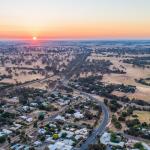Here are some examples of our work at UTS contributing towards SDG 17.
About SDG 17: Partnerships for the goals
Implementing solutions requires effective partnerships. At the international level this must include financial assistance to developing nations as well as fair and equitable sharing of technology and data. Fair trade, capacity building, technology transfer and supporting macro-economic stability are the core ways in which wealthy nations can help. Universities have a vital role to play partnering with government, industry and communities to develop and implement new ideas, approaches and technology.
At UTS our biggest contribution is through our research and the student body, of which 20% is made up of international students. Many of these return to their home countries to use the education and skills acquired in Australia to build capacity in their home countries. Within the sector, the UTS Institute for Sustainable Futures wrote the Australia, New Zealand and Pacific version of ‘Getting Started with the SDGs in Universities”, a road map to support other tertiary institutions with the SDGs. Below are further examples of our contribution and impact.
Tackling Air Pollution at the Local Level
The OPENAIR project revolutionises air quality monitoring – empowering local governments to take action on this pressing issue.
Pacific Connect Program evaluation
This program aims to facilitate a greater exchange of ideas and expertise between Australia and the Pacific, fostering enhanced collaboration and business opportunities, especially in the application of digital technology to support sustainable development.
Adrift - mapping marine microbe ocean journeys
Citizen scientists use a simulated web environment to help map the ocean trajectories of marine microbes.
SEAweed Tech Bio-plastic manufacture
An innovative UTS-led project to produce a zero-waste bioplastic designed to mitigate pollution, and create future-proof employment opportunities for vulnerable coastal communities in the Asia Pacific.





